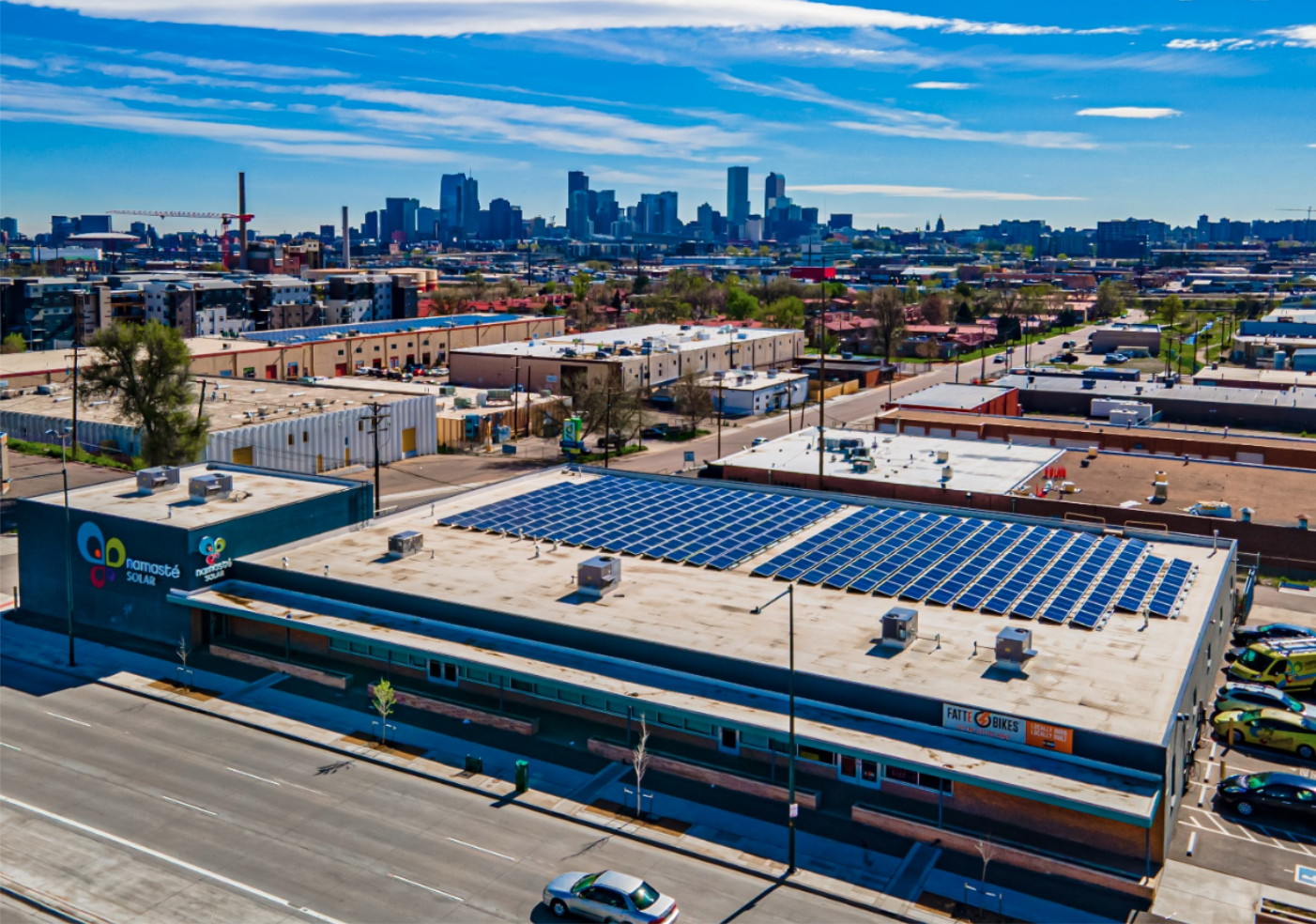
By Rachel Mountain,
Greenhouse gases from commercial buildings are no longer accepted as unavoidable externalities. The City of Denver is committed to reducing greenhouse gas emissions by 2040, and they need your help to do it. New building performance policies, like Energize Denver, are designed to improve energy efficiency, encourage electrification, create jobs, and curb climate change. Further, the city predicts that Denver will become a more attractive place to live and work as property owners reduce their energy use and their OpEx as a result.
What is Energize Denver?
Energize Denver is a program that sets requirements for existing commercial buildings within Denver city limits to decrease their energy use intensity (EUI), a measure of a building’s energy use per square foot. Energize Denver requires commercial buildings 25,000 square feet and larger to meet a series of reduction benchmarks in 2024 and 2027, leading up to a final EUI target in 2030. You can check the status of your building’s compliance at any point using this spreadsheet, or dig into energy performance metrics on this Benchmarking Map.
It’s important to note that buildings between 5,000 and 24,999 square feet have a different set of requirements. Owners can choose to lower energy usage through LED lighting options or improve energy sources by investing in onsite or offsite renewable energy to offset 20% or more of the facility’s annual energy consumption. Compliance deadlines vary based on building size and start on December 31, 2025.
Why Should I Choose Solar?
There are multiple ways to reduce your EUI and installing solar to offset some (or all) of your energy consumption is one with a significant impact to both EUI and your bottom line. For example, Energize Denver assigned office buildings a target EUI of 48.3, and according to the Benchmarking Map, most office buildings are currently sitting at site EUI’s of 41-80. A typical 30,000-square-foot office roof can accommodate a 200kW solar system, which will produce enough electricity to reduce the building’s EUI by 33, enough to bring many of these properties into compliance. Additionally, given the available tax benefits and utility savings and incentive income, a commercial solar investment will typically break even in seven to nine years on this 30+ year asset with a 10%+ internal rate of return (IRR). It’s a win-win!
The good news is 15% of buildings already perform better than their 2030 EUI target. For example, Namaste Solar invested in a 100kW solar system that offsets 100% of our Denver office’s energy use, so we are already in compliance. If building owners don’t reduce their EUI they will have to pay heavy fines, so why not spend those funds on an asset that will provide a sizeable return on investment plus all the other benefits of going solar: increased property value, stabilized energy costs, decreased dependence on fossil fuels, and a positive marketing opportunity.
Note: If you’re a building owner that is leasing to NNN tenants, not to worry! You and your tenants can still reap the financial benefits of solar.
The 2024 benchmark is just around the corner, and a commercial solar system can take a year from contract to completion. We encourage you to get started now, so you can be breaking even by the 2030 deadline. Reach out to a local solar expert and Energize Denver service provider to see how solar can help you meet code and save money.
Rachel Mountain is co-owner and commercial solar project developer at Namaste Solar. Namaste Solar’s purpose is to transform energy and transform business. The company’s non-commissioned solar developers will help you understand your project potential, and they will be the first to tell you if onsite solar doesn’t make sense for your property. Check out their extensive commercial experience and see how they measure up.









